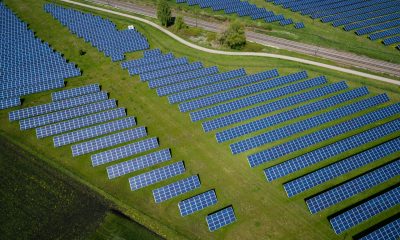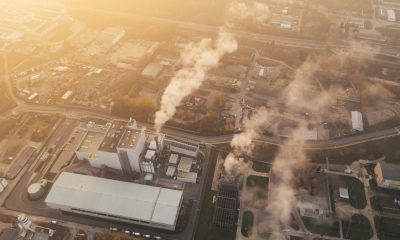Impact Investing
Why Natural Gas Is Increasingly Crucial to the Energy Transition
Natural gas prices remain high due to reduced supply and geopolitical tensions. CO2 emission allowances offer a cost-effective, clean alternative investment, benefiting from rising carbon prices that favor gas over coal. Carbon markets, with strong returns and low correlation to traditional assets, provide diversification and exposure to the global energy transition and growing Asian demand.

Natural gas prices are expected to remain elevated, especially in Europe, where storage levels are lower than last year. A prolonged cold winter and continued reduced gas supply due to Russia’s invasion of Ukraine could put upward pressure on natural gas prices.
Additionally, potential regulatory changes under the new U.S. administration and implications for the Russia-Ukraine conflict are two key factors that could impact supply.
Rather than taking a long position in natural gas, therefore, a more efficient way to gain exposure to the sector is through CO2 emission allowances
Indeed, it is very difficult to maintain a long position in natural gas because investors can only gain direct exposure through futures, which can be incredibly expensive from a rolling yield, or contango, perspective.
Alternatively, CO2 emission allowances, which are interconnected with gas and the broader energy market, are the cleanest and relatively cheapest trading method, with no storage costs and limited contango.
When the price of CO2 increases, it becomes more expensive to pollute, because to offset their emissions, companies must spend more to buy the same number of credits. The marginal abatement cost curve explains how much the price of CO2 must increase for industries to switch from high-emission fuels (such as coal) to low-emission fuels (such as gas).
In fact, burning coal produces twice as many CO2 emissions as burning gas. Specifically, coal emits 2 tonnes of CO2 per unit of energy, while gas emits only 1 tonne. This difference means that when burning coal instead of gas, stakeholders must purchase twice as many credits to account for their emissions. Therefore, gas is a relatively more attractive alternative, as it requires fewer CO2 credits.
The price of CO2 credits is currently rising enough to make gas more attractive than coal, which is why natural gas is currently the fastest growing fuel source globally
While fossil fuel use is declining in places like Europe and the United States, gas demand is still rising in developing countries like China, India and Vietnam, where energy consumption is growing thanks to economic development and a growing middle class.
On the supply side, this continues to be a challenge, and while we may see increased availability in Europe from the Nordics, we believe that conditions in the energy market will remain tight.
Since August 2022, the European Union has significantly reduced its use of natural gas. For example, from August 2022 to March 2023, gas consumption decreased by 80%, and from January 2024 to August 2024, it decreased by another 22%.
However, Europe will focus on energy security and economic growth, which will likely lead to higher prices for both gas and CO2.
As energy demand continues to grow, and because it is also cleaner than coal, gas will remain a strong investment theme for the next five years.
In the face of changes in the energy transition , with the shift from coal to gas, nuclear and finally to renewables, CO2 markets represent a unique investment opportunity. They present high expected returns (20-25% annualized) and a low correlation with traditional assets such as US equities, while having a similar Sharpe ratio. This makes CO2 shares a valid alternative investment for portfolio diversification, offering financial benefits and a positive environmental impact.
In summary, natural gas continues to play a crucial role in the energy transition, driven by the price of carbon and growing demand in Asia. For investors, carbon markets offer a way to gain exposure to this shift with high return potential and low correlation to traditional assets.
__
(Featured image by Magda Ehlers via Pexels)
DISCLAIMER: This article was written by a third party contributor and does not reflect the opinion of Born2Invest, its management, staff or its associates. Please review our disclaimer for more information.
This article may include forward-looking statements. These forward-looking statements generally are identified by the words “believe,” “project,” “estimate,” “become,” “plan,” “will,” and similar expressions. These forward-looking statements involve known and unknown risks as well as uncertainties, including those discussed in the following cautionary statements and elsewhere in this article and on this site. Although the Company may believe that its expectations are based on reasonable assumptions, the actual results that the Company may achieve may differ materially from any forward-looking statements, which reflect the opinions of the management of the Company only as of the date hereof. Additionally, please make sure to read these important disclosures.
First published in ESG NEWS. A third-party contributor translated and adapted the article from the original. In case of discrepancy, the original will prevail.
Although we made reasonable efforts to provide accurate translations, some parts may be incorrect. Born2Invest assumes no responsibility for errors, omissions or ambiguities in the translations provided on this website. Any person or entity relying on translated content does so at their own risk. Born2Invest is not responsible for losses caused by such reliance on the accuracy or reliability of translated information. If you wish to report an error or inaccuracy in the translation, we encourage you to contact us

-

 Fintech2 weeks ago
Fintech2 weeks agoKraken Acquires Backed Finance to Boost RWA Strategy Ahead of 2026 IPO
-

 Business7 days ago
Business7 days agoMarkets Now Appear Steady, but Cracks Are Forming Beneath
-

 Biotech2 weeks ago
Biotech2 weeks agoPharma-Biotech Program Showcases Spanish Innovation and Strengthens Biomedical Collaboration
-

 Impact Investing4 days ago
Impact Investing4 days agoGlobal Rift Over Fossil Fuels Blocks UN Environmental Agreement

























